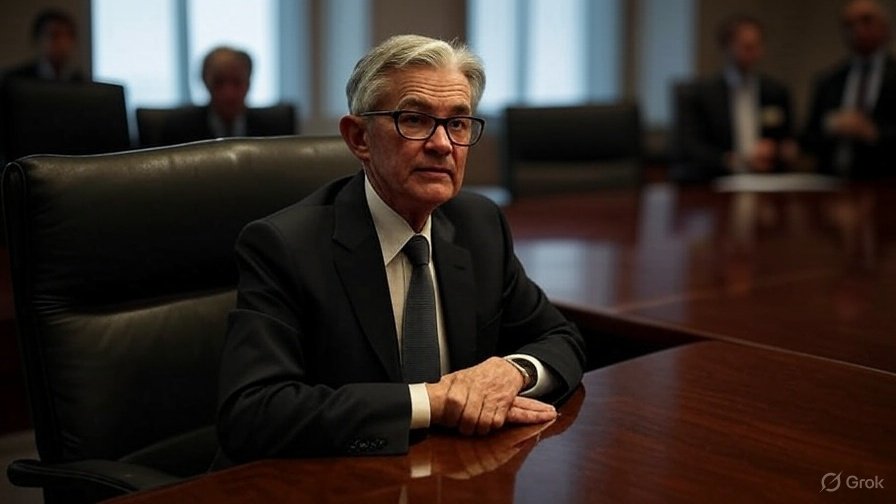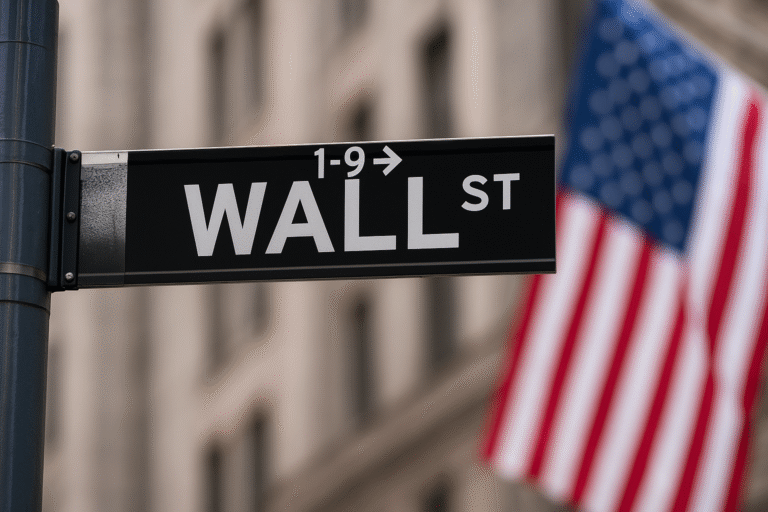
On June 18, 2025, the Federal Reserve opted to keep interest rates unchanged at 4.25% to 4.5% for the fourth straight meeting, driven by concerns over stagflation and uncertainties tied to President Donald Trump’s proposed tariffs. The central bank also revised its outlook, forecasting just two 25-basis-point rate reductions for 2026, a more conservative stance than previously anticipated. This decision has triggered fluctuations in the stock market, though analysts remain cautiously upbeat. Meanwhile, President Trump has intensified his push for significant rate cuts to boost economic growth, clashing publicly with Federal Reserve Chair Jerome Powell, who staunchly defends the Fed’s independent approach.
Federal Reserve’s Cautious Approach and Stagflation Risks
The Federal Open Market Committee (FOMC) highlighted growing uncertainties in the economic landscape, pointing to the dual risks of rising unemployment and persistent inflation—a scenario that could lead to stagflation, where economic growth stalls while prices climb. During a June 18 press conference, Powell emphasized the Fed’s commitment to a data-driven strategy, noting that new tariffs could push prices higher in the short term, complicating efforts to achieve stable inflation and robust employment. He stressed that the Fed remains vigilant, ready to adapt as economic conditions evolve.
Market participants largely anticipated the decision to hold rates steady, with tools like the CME FedWatch indicating near-certainty of no change. However, the reduced forecast for 2026 rate cuts has sparked concerns about prolonged high borrowing costs, which could curb consumer spending and business expansion. Analysts suggest that Trump’s tariff policies may exacerbate inflationary pressures, potentially forcing the Fed to maintain elevated rates longer than expected, further clouding the economic outlook.
Stock Market Reacts with Volatility but Holds Positive Outlook
The stock market experienced choppy trading following the Fed’s announcement. The Dow Jones Industrial Average climbed by about 300 points (0.7%) by the end of the session after earlier gains, while the S&P 500 remained nearly flat, and the Nasdaq Composite slipped slightly by 0.2%. Yields on 10-year Treasury notes dipped to 4.24%, reflecting investor caution as they shifted toward safer assets. Financial experts noted that markets are reacting strongly to any hints about future Fed actions, given the uncertain economic environment.
Despite the swings, analysts see reasons for guarded optimism. Strong labor market indicators, such as an unemployment rate holding at 4.2%, combined with easing prices for commodities, suggest the economy can withstand near-term challenges. However, businesses may delay hiring or investment due to tariff-related uncertainties, which could slow growth. Social media discussions on platforms like X show mixed sentiment, with some investors hopeful for a market boost in September if the Fed signals a rate cut, though these views are speculative and varied.
Trump-Powell Divide Deepens
President Trump has escalated his criticism of Powell, pressing for a substantial rate cut—potentially a full percentage point—to stimulate economic activity. In early June 2025, Trump took to social media to argue that lower rates would energize the economy, especially as prices for essentials like fuel and food decline. He has repeatedly questioned Powell’s leadership, describing the Fed’s cautious approach as a drag on growth and even hinting at wanting a new chair, though he later clarified he has no plans to remove Powell.
Powell, in response, has reaffirmed the Federal Reserve’s independence, stressing that policy decisions are grounded in objective analysis, not political influence. During a May 2025 meeting with Trump, Powell underscored the importance of shielding monetary policy from external pressures to maintain economic stability. His June 18 comments reinforced this, emphasizing that the Fed’s focus is on serving the broader public through balanced, evidence-based decisions. Economic studies support this stance, showing that central bank autonomy helps keep inflation in check and fosters long-term stability.
Trump’s persistent calls for lower rates have raised concerns about potential efforts to influence the Fed, though advisors have reportedly warned against actions that could unsettle financial markets. Speculation about Powell’s tenure continues, with some betting platforms suggesting a small chance he could step down by year-end, adding to market jitters.
What Lies Ahead for Markets and the Economy
The Fed’s steady-rate policy and scaled-back 2026 rate cut projections point to a complex economic path. Stagflation risks, fueled by potential tariff-driven price increases, could challenge the Fed’s ability to balance growth and inflation control. Investors are advised to focus on sectors resilient to high interest rates, such as utilities and defense, while keeping an eye on key data like consumer confidence and commodity trends. The Fed’s next meeting on September 17-18, 2025, will be pivotal, with markets anticipating possible signals of a rate cut.
For now, the tension between Trump’s push for aggressive monetary easing and Powell’s defense of Fed independence continues to shape economic and market narratives. The interplay of these dynamics, alongside evolving economic indicators, will drive investor sentiment and policy decisions in the coming months.



